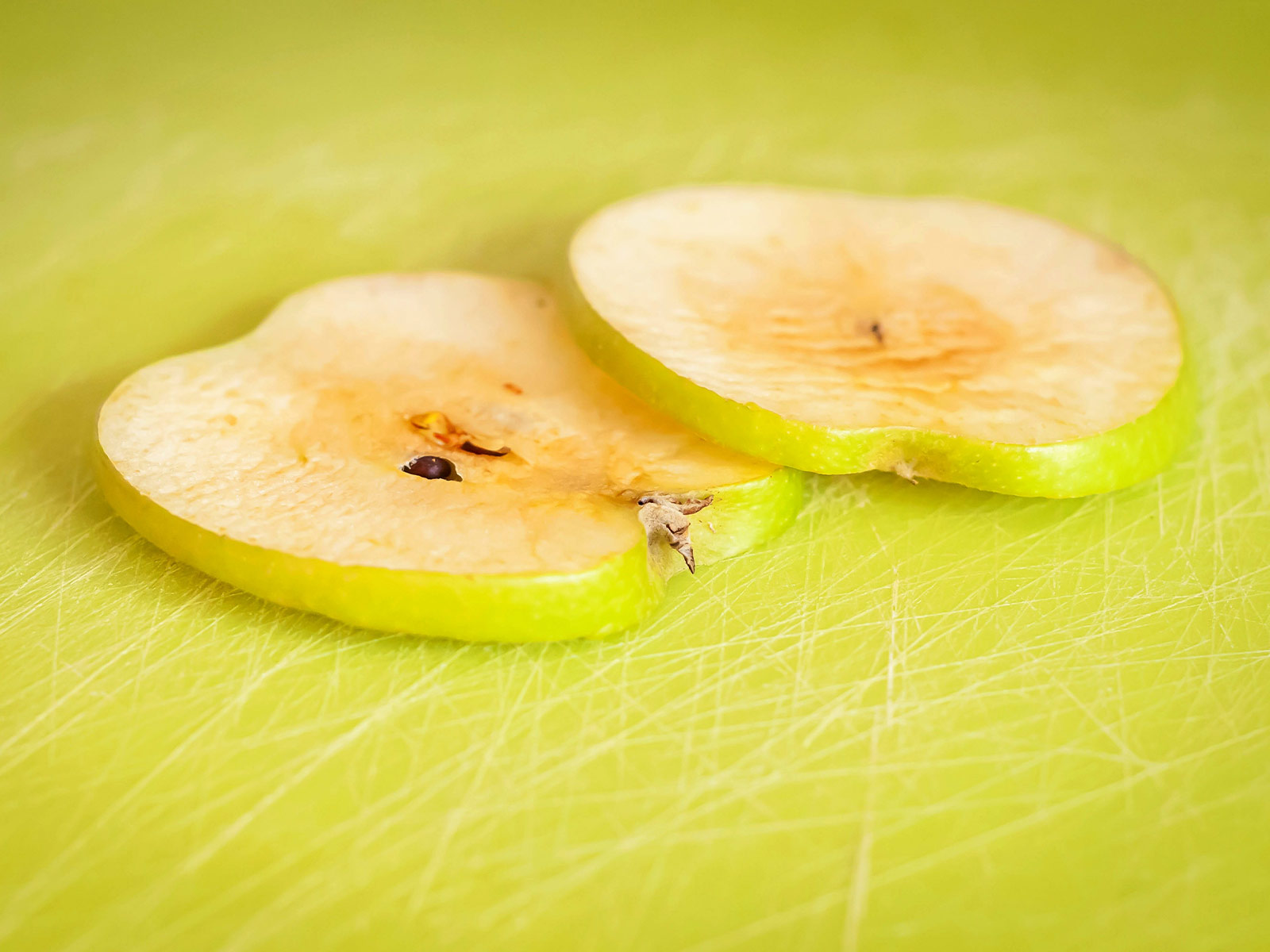Have you ever wondered why apples turn brown after you slice them? With this fun experiment, you can become a detective and crack the case!

Materials:
- 1 apple
- Sharp knife (with adult supervision)
- Cutting board
- 5 small bowls or containers
- Lemon juice
- Vinegar
- Salt water (mix 1 teaspoon of salt with 1 cup of water)
- Baking soda water (mix 1 teaspoon of baking soda with 1 cup of water)
- Water
- Pen and paper
Let’s Experiment!
- Prepare your apple slices: Wash and dry the apple. Cut it in half and then into thin slices. Try to make the slices as even as possible.
- Label your bowls: Write the names of each liquid on separate pieces of paper and attach them to the bowls. You should have bowls labeled “lemon juice,” “vinegar,” “salt water,” “baking soda water,” and “water” (this is your control group).
- Dip and observe: Place one apple slice in each bowl. Make sure the slices are completely submerged in the liquids.
- Wait and watch: Set a timer for 30 minutes and observe the apple slices. Do they all start to brown at the same rate? The scientific term for the browning process is oxidation. Are some liquids more effective at preventing browning than others?
- Record your results: After 30 minutes, take out the apple slices and compare them. How brown are they? Write down your observations in a chart or table.
- Analyze the results: Which liquid did the best job of preventing browning? Which liquid had the least effect? Can you explain why?
Explanation:
When the apple flesh is exposed to air, the enzymes in the apple react with oxygen in the air, causing the browning. Lemon juice, vinegar, and salt water are acidic, which slows down the enzyme activity/ oxidation. Baking soda water is alkaline, which can speed up the browning process.
Bonus challenge: Try the experiment with different types of apples and see if the results are the same. You can also try different liquids, like soda or honey water, to see how they affect browning.
